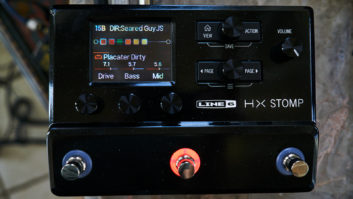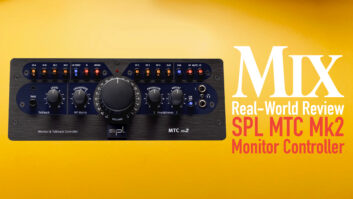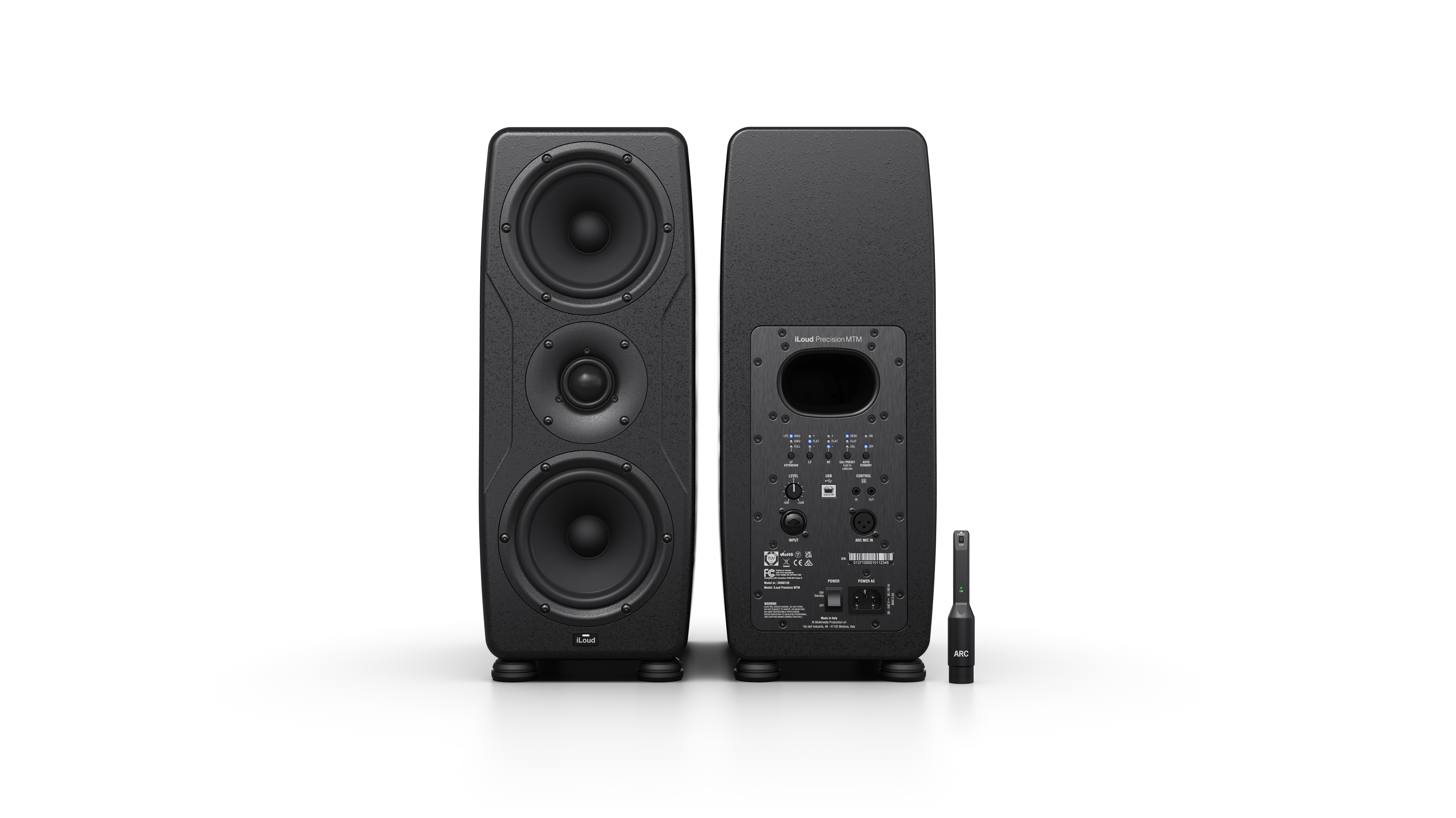I remember when “personal monitor” meant an Auratone or Fostex 6301—the latter, an indestructible little broadcast audio workhorse. Today, there are mini-monitors everywhere and Fostex has added two such models in its PX line, serving needs at the intersection of broadcast and home studio applications.
Features
The PX-6 employs a bass-reflex design; 6.5-inch resin-impregnated aramid, fiber-stiffened woofer; a 1-inch resin-impregnated urethane, film-laminated polyester dome tweeter; 50 and 28 watts of power to woofer and tweeter, respectively; combo XLR/TRS and RCA inputs; a single rotary pot that switches to control both level and tone; DSP-controlled crossover at 2 kHz; 20 Hz to 20 kHz frequency response +/-2 dB); signal fade-up at power-on; and a low energy consumption mode.
In Use
On first inspection, the PX-6 struck me as a thoroughly modern monitor, with its combo input, ingenious four-function rotary encoder (Volume and Trim offer combined 440-step resolution, while Treble adjusts HF output and Bass adjusts LF rolloff, all of which can be saved) and cabinetry, design, and finish. Upon first listen, they seemed natural and subdued, rather than bright and forward (like many modern small monitors). Accurately setting the parameters took some time—thanks to back-panel controls— but I eventually settled on a +2 dB top end boost to achieve my own taste in balance. I stuck with this setting even after considerable use.
As I tried mixing and mastering with the PX-6s, it quickly became clear that they weren’t going to give me the equitable combination of flat response, detail and translatability I required for precise music work. They did impress me as sufficiently full, even if perhaps lacking some note definition in the low end; nicely matched and even with stable imaging; amply loud and strikingly attractive (that red-eye tweeter looks cool, very HAL from 2001).
Wouldn’t you know it: during this evaluation period, I got two big location-recording jobs and I hoped that the PX-6s would be ideal for some portable monitoring. The first gig provided the pressure of two world-class producers whom I idolize (no name dropping—confidentiality agreement) monitoring my on-location mixes; both of them were plenty satisfied with the PX-6’s clarity, output level and intelligibility. On the second gig, the PX-6s filled my makeshift control room with joyful gospel sound and held up like troupers under long hours, nearly 100 percent humidity and the high heat of the South Carolina sandhills.
To My Ears
If your audio work is in a production truck/on-location and you need a small monitor footprint with ample SPL and front panel ports (for tighter placement options), require a non-fatiguing full sound with the detail necessary to mix dialogue and professional durability (as I’ve grown to expect from Fostex monitors) and can’t quite afford the Neumann KH 120 (my top pick in small, location-friendly monitors at $1,500 per pair) then I recommend giving the Fostex PX-6 a try. At $899 a pair, street, they’re quite worthy for location and broadcast applications—a growing portion of my own work—even as they are rivaled by numerous competitors in the saturated “small studio monitor” marketplace.







